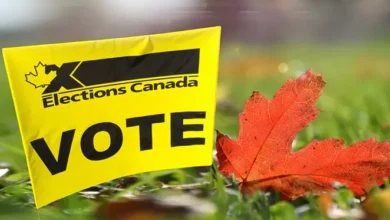NSP plan to divert Fiona restoration costs to ratepayers meets with stiff criticism

Nova Scotia Power’s plan to collect nearly $25 million plus interest from ratepayers to help cover damages the company incurred from post-tropical storm Fiona in September 2022 has generated a good deal of criticism.
“You absolutely must not approve the extra $25-million Fiona bill,” said one letter writer to the Nova Scotia Utility and Review Board (NSUARB) in response to NSP’s application to have the $25-million cost deferred until 2025-26 and then recovered from ratepayers over a five-year period.
“It’s ridiculous that this private company wants to have us cover the bill from last year,” the letter writer continued. “NSP is a private company. They should act like it. It’s a free market, they should prepare for issues like this.”
Another letter writer said NSP failed in its due diligence.
“Since 2014, experts in Canadian electricity generation and transmission have been warning utilities about the need to adapt to climate change,” the letter reads. “NSP knew, or should have known, that larger, devastating storms would occur more often and with greater frequency. Acknowledging the threat from a changing climate would have seen NSP place greater financial resources aside to accommodate higher risk.
“Essentially, NSP is forcing ratepayers to accommodate for NSP’s lack of conscientiousness.”
‘Unforeseen’ damage
The company, in its application that was filed with the utility review board on Oct. 31, says Fiona was “significant, unforeseen and extraordinary,” to an even greater extent than post-tropical storm Dorian.
The company application states that Fiona brought sustained hurricane-force winds of more than 100 kilometres per hour and peak gusts of 160 km/h when it plowed through the province on Sept. 23 and 24, 2022.
The storm caused widespread damage to Nova Scotia Power’s transmission and distribution system and, at the height of the storm, approximately 415,000 customers lost power.
Wind gusts exceeding 100 km/h persisted for four hours in metro Halifax, eight hours in eastern Cape Breton and up to 13 hours in the northeast region of the province.
As of Sept. 30, 2023, the company says it incurred $114 million in Fiona storm restoration costs, $89.6 million related to property, plant and equipment and the remaining $24.6 million charged to operating, maintenance and general expenses (OM&G).
It is that $24.6 million OM&G expense and an accompanying $1.767 million in interest that NSP wants to recover from ratepayers, beginning at the earliest in 2025-26, after the provincial government’s legislated cap on NSP rate hikes expires.
The company said in its application that it invests $20 million to $25 million on average each year in tree trimming and clearing trees from rights-of-way, which, over the last five years, has added up to an expenditure of approximately $100 million.
The electricity rates in place in 2022 included approximately $11 million annually for OM&G storm costs, a figure calculated based on the five-year average storm costs from 2007 through 2011 as part of the company’s 2013 General Rate Application process.
Restoration response
The company says even if Fiona costs are excluded, the actual OM&G storm costs incurred in 2022 were $21 million, already in excess of the $11-million storm cost included in rates.
The company says the impact of Fiona is so significant that without deferral, NSP would not be given the opportunity to recover its Fiona costs.

Nova Scotia Power reported in its 2022 regulated financial statements a regulated return on equity for shareholders of 8.65 per cent, below the low end of its NSUARB-approved earnings band of 8.75 per cent.
Deanna Miller, a senior communications adviser with NSP, said Fiona was “the most significant hurricane to ever hit Nova Scotia and prompted the largest restoration response in our company’s history.
Miller said the company has filed its application to defer costs associated with Fiona restoration efforts with the NSUARB, and “the regulatory process exists to ensure that customers receive safe and reliable service at a reasonable price.”
Miller said the company doesn’t comment on matters before the board.
The board will conduct a paper hearing and if members of the public want to submit letters to the board about the application, they can do so until Feb. 2.
Collection of evidence from participating parties, including the consumer advocate, the small business advocate, the industrial group and the provincial Natural Resources and Renewables Department will continue until March 29.
Nova scotia Power will file rebuttal evidence on March 8, closing arguments from all the parties are due on March 22 and final arguments are due on March 29.
The board will then take the time to make its decision.
‘Protect ratepayers’
Patricia Jreige, a spokeswoman for the Natural Resources and Renewable Department, said the department’s priority is “always to protect ratepayers and we will continue to stand with them and the UARB, as the regulator, will make the decision on this matter.”

Susan Leblanc, the NDP MLA for Dartmouth North, said the company request is “a bitter pill to swallow” for Nova Scotia ratepayers who have experienced a 14 per cent increase in electricity rates over the past 12 months.
“We are already paying very high rates for power, we don’t have a reliable grid and the idea of having to pay more because of repairs to the grid and for infrastructure when Nova Scotia Power shareholders are bringing in big bonuses and getting an eight per cent rate of return on their investments, that’s very hard for the average Nova Scotian to accept,” Leblanc said.
‘In terms of the severity of the storm, I don’t buy the no one could have anticipated it argument. We know all over the world we are living with the effects of climate change and storms are getting worse in Atlantic Canada, and yes, Fiona was very bad, but we’ve also had other really bad storms and we’re going to have a lot more bad storms. This idea that every time there’s a big power outage and there is a bunch of work that needs to be done, Nova Scotia ratepayers are on the hook for it, that doesn’t make sense in the world we’re living in and it would be unsustainable.”
The NDP have tabled several pieces of electricity-related legislation recently, including a bill that would tie Nova Scotia Power’s profits to performance standards and legislation that would ensure lower-income residential customers do not pay more than six per cent of the customer’s household income on home energy.
On March 31, 2022, the NDP tabled a bill to study bringing Nova Scotia Power back into public ownership.
“We are calling for the government to look at this, how much it would cost, what would happen to the grid, we want to get a study done of all the options and get a report back,” Leblanc said.
“The way it’s working right now with the rate increase we’ve just had … presumably more increases based on this application, it’s just becoming unsustainable.”




